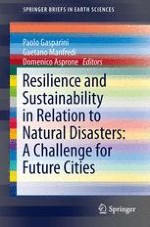2014 | OriginalPaper | Chapter
4. “Resilience for All” and “Collective Resilience”: Are These Planning Objectives Consistent with One Another?
Author : Kalliopi Sapountzaki
Published in: Resilience and Sustainability in Relation to Natural Disasters: A Challenge for Future Cities
Publisher: Springer International Publishing
Activate our intelligent search to find suitable subject content or patents.
Select sections of text to find matching patents with Artificial Intelligence. powered by
Select sections of text to find additional relevant content using AI-assisted search. powered by
